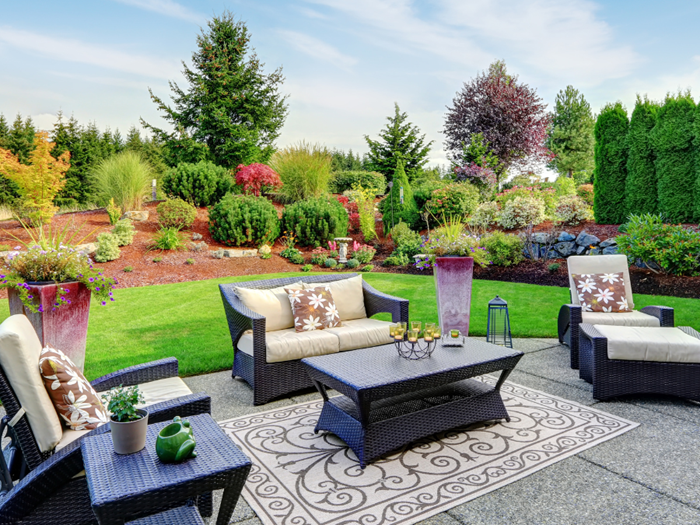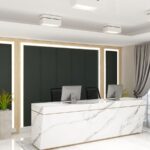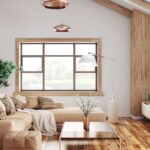Selecting the right material for your outdoor furniture is one decision that goes beyond aesthetics. It will impact the longevity and overall quality of your investment. In this comprehensive guide, TradeGully will help you navigate through various factors that should influence your choice of outdoor furniture material, ensuring that your outdoor space is both functional and beautiful. Let us delve into the world of outdoor furniture materials and make an informed decision tailored to your needs.
The Importance of Selecting the Right Material
Choosing the appropriate material for your outdoor furniture is akin to investing in its future. It directly influences how the furniture will endure the elements, the wear and tear of regular use, and how well it maintains its visual appeal over time. Understanding the correlation between climate, usage, and material selection is fundamental to making an informed choice.
Things to Consider When Purchasing Patio Furniture
- Budget Considerations: Assessing your budget helps determine the range of materials available to you. Balancing quality and cost is the key.
- Maintenance Requirements: Different materials have distinct maintenance needs. Consider the time and effort you are willing to invest. Make sure you know all your options.
- Longevity and Durability: Opt for materials that promise longevity and can withstand the outdoor conditions in your area. You do not want to keep buying more furniture every season.
- Aesthetic Appeal: Choose a material that aligns with your design preferences and enhances the overall look of your outdoor space. Adhering to a colour scheme, theme or design in your aesthetic would be great.
- Environmental Concerns and Sustainability: If environmental impact is a concern, consider eco-friendly and sustainable material options which are plenty.
Types of Materials
Synthetic Resin Wicker
Synthetic resin wicker is a popular choice due to its durability, flexibility and low maintenance. It is resistant to water and UV rays, making it ideal for outdoor use. Regular cleaning and storage during harsh weather are recommended.
Recommendations: Incorporate synthetic resin wicker in your outdoor lounge sets and dining sets. The flexibility of the material allows for various designs, from traditional to modern, adding a stylish touch to your patio or deck.
Composite – Poly Lumber
Poly lumber is an eco-friendly alternative to wood, made from recycled plastics. It offers durability, resistance to decay and insects. It requires minimal maintenance compared to the traditional wood.
Best Practices: Utilise poly lumber for outdoor dining tables, chairs, and benches. Its ability to mimic the look of wood makes it a versatile choice, fitting into various outdoor design schemes.
Teak
Teak is renowned for its natural oils that make it resistant to water, insects and decay. Proper maintenance involving regular cleaning and oiling can extend its lifespan and maintain its golden hue.
Best Practices: Opt for teak in crafting outdoor benches, loungers, and tables. Its durability makes it ideal for enduring the outdoor elements, and its elegant look adds a touch of sophistication to any outdoor setting.
IPE
IPE, a Brazilian hardwood, is known for its durability and resistance to rot, insects, and decay. It requires minimal maintenance and is an excellent alternative to teak.
Best Practices: Use IPE for decking, outdoor flooring and outdoor seating. Its resilience to extreme weather conditions makes it a go-to choice for areas with diverse climates.
Cast Aluminium
Cast aluminium is lightweight, rust-resistant and highly durable. Proper cleaning and occasional waxing can keep it looking new for years.
Best Practices: Opt for cast aluminium for outdoor bistro sets, chairs and decorative accents. Its versatility allows for intricate designs while being sturdy enough for outdoor use.
Wrought Iron
Wrought iron is cherished for its classic aesthetics and sturdiness. Regular cleaning and applying a protective finish can extend its life and maintain its appearance.
Best Practices: Incorporate wrought iron in your outdoor garden furniture, benches and gates. Its timeless look pairs well with lush outdoor landscapes.
Steel
Steel is robust and can withstand harsh weather conditions. Proper maintenance involving rust prevention and occasional touch-ups can ensure its longevity.
Best Practices: Utilise steel for outdoor sofas, chairs, and coffee tables. Its strength allows for modern, sleek designs that complement contemporary outdoor spaces.
Additional Material Options
Natural Wicker
Natural wicker is crafted from rattan, bamboo or reed. It is very popular for its classic look and lightweight design. However, the natural wicker is best suited for covered or indoor areas as it may not withstand harsh weather. On the other hand, all-weather wicker, usually made of resin, is more durable and suitable for outdoor use.
Best Practices: All-weather wicker is ideal for outdoor patio sets and accent pieces. Its versatility allows for both traditional and modern designs, giving you ample choices for your outdoor décor.
Steel with Powder Coating
Steel is a sturdy material, and when coated with powder, it becomes even more resistant to rust and adverse weather conditions. Powder coating also provides a variety of colour options, allowing you to match the furniture with your outdoor décor.
Best Practices: Powder-coated steel is excellent for outdoor dining sets and lounge chairs. Its durability and colour options make it a versatile choice for various outdoor setups.
Cedar
Cedar is a type of wood that’s naturally resistant to decay and insect infestation. It is a good choice for outdoor furniture due to its durability and attractive appearance. Over time, cedar develops a beautiful silver-grey sheen if left untreated.
Best Practices: Cedar is perfect for crafting outdoor tables, chairs, and Adirondack chairs. Its natural beauty and resistance to decay make it a favourite for rustic and natural outdoor settings.
Mesh
Mesh outdoor furniture is often made of PVC-coated polyester or vinyl. It’s comfortable, low-maintenance, and dries quickly after rain, making it a suitable option for poolside lounging.
Best Practices: Mesh material is ideal for outdoor loungers and poolside chairs. Its quick-drying properties ensure comfort and practicality, especially in areas with pools or near water.
Consider Your Space and Style
Apart from the material, the style of outdoor furniture also matters. Modern, traditional, coastal, or rustic – choose a style that complements your outdoor space and reflects your personal taste. Moreover, you should consider the layout of your area and measure the space to ensure the furniture fits comfortably.
Best Practices: For smaller spaces, consider foldable or stackable furniture. In spacious areas, opt for a sectional sofa or a full outdoor dining set to make the best use of space.
Maintenance and Care
Please keep in mind that every material has its specific maintenance requirements. Some may need regular oiling, staining, or protective coatings. Others might require simple cleaning with mild soap and water. Understanding the maintenance needs beforehand can save you time and effort in the long run.
Best Practices: Create a maintenance schedule for your outdoor furniture based on the material. Regular cleaning, applying protective coatings, and storing during harsh weather can significantly extend their lifespan.
Final Thoughts
In conclusion, the material you choose for your outdoor furniture is an important decision that affects its appearance, durability, and how well it withstands various weather conditions. Consider your specific needs, preferences, and climate to select the most suitable material. Strive for a fusion of style and functionality to create an outdoor haven that stands the test of time without breaking your bank!
Your outdoor space is an extension of your home and the right furniture can transform it into a relaxing oasis. Make your outdoor space a true retreat by selecting the perfect furniture material that suits your needs and style. If you have any questions or need further assistance, feel free to contact us at TradeGully. Your ideal outdoor oasis is just a choice away.
Discover the perfect material for your outdoor furniture with expert guidance from TradeGully. Contact us today for personalised recommendations.
FAQs
What is the most long lasting outdoor furniture?
The most long-lasting outdoor furniture is made from materials designed to withstand the elements. Teak, acacia, and other weather-treated woods are excellent options as they are naturally resistant to decay and pests. Metals like cast or wrought aluminum are also durable and resist rust. All-weather wicker is another robust choice that can endure various weather conditions. Investing in furniture made from these materials ensures you’ll enjoy your outdoor space for years to come.
Which wood is best for outdoor furniture?
The ideal woods for outdoor furniture are those that possess natural moisture-resistant properties. Softwoods like cypress, redwood, and cedar are good options. However, for the most durable and long-lasting furniture, premium hardwoods such as ipe, mahogany, and teak are considered the best choices. These hardwoods are not only moisture-resistant but also stand up well to the elements, making them perfect for outdoor use.
What is the best furniture for outside weather?
The best outdoor furniture material depends on your location and weather conditions. Aluminum is highly popular due to its lightweight and rust-resistant properties. Resin Wicker offers a stylish yet durable choice, often built over an aluminum frame. Wood, like teak or cedar, provides a natural look but requires regular maintenance. Recycled plastic is eco-friendly and sturdy. Wrought Iron is heavy and durable but may need weatherproofing. Steel is strong but can rust, so it’s better for dry climates. Mosaic furniture is aesthetically pleasing but may require extra care. Choose based on your specific needs.






